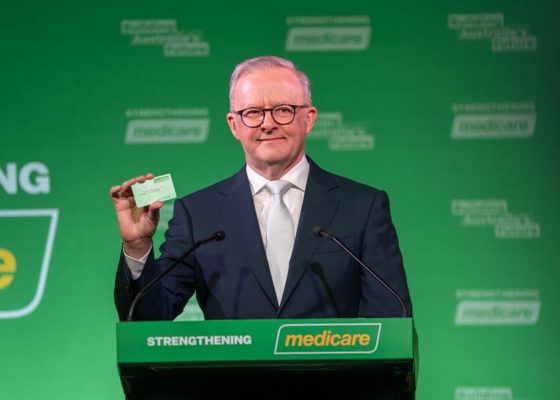That sound you can hear is the opening of a whole new can of payroll tax worms.
Federal health minister Mark Butler has now confirmed that funds from the incoming Bulk Billing Practice Incentive Program (BBPIP) will be split evenly between practices and GPs – a call that has been met with scepticism from the sector.
The split will only apply to the BBPIP, which is the new 12.5% loading payment for practices that commit to universal bulk billing of GP non-referred attendance items set to kick in from November.
This is separate to the expanded tripled bulk-billing incentive (BBI) payment, which will also kick in from November, and will allow all GPs to receive an additional payment whenever they bulk bill any Australian regardless of whether the practice is universal bulk billing or not.
The tripled BBI is an existing incentive that currently only applies to children and healthcare cardholders, whereas the BBPIP is an entirely new payment.
PIP payments currently either go entirely to the practitioner, as is the case for the rural procedural GP payment, or go entirely to the practice, as is the case for the eHealth incentive.
Some practices choose to pass some or all of a practice payment on to individual GPs.
Mandating that the practice-GP split be equal is new territory.
“We think that is the right balance,” Mr Butler said on Friday.
“Individual doctors should be rewarded for taking a decision to bulk bill every patient that they see, but also we need to make this work for the practice themselves.
“We think – although there have been arguments made to us that doctors should get all of the money or the practices should get all of the money – we think striking the balance that the money is split evenly between those doctors and the practices is the right decision.”
He reiterated that the Department of Health, Disability and Ageing modelling predicted that GP bulk-billing rates would reach 90% by 2030, and said that splitting the PIP would be a win for practices and practice owners.
“We’re not just plucking a number out of thin air,” said Mr Butler.
“We modelled this very carefully. We have great access to what practices are currently doing in terms of their billing, and we’re confident that the money we put on the table in February means that three-quarters of practices will be better off financially if they move to a full bulk-billing model.
“Now, that really requires doctors – individual doctors – to buy into this but also practice owners to buy into it as well, which is why we’ve gone with the idea or the decision to split the incentive evenly.”
Dr John Deery, a Canberra GP and current chair of GP practice owners peak the Australian GP Alliance, told Health Services Daily that he feared the nature of the incentive, which requires all GPs at a practice to commit to bulk billing, would have payroll tax implications.
“This opens a whole can of worms … while the states [have largely] decided that bulk billing won’t incur payroll tax, we still have an issue of, if the practice owners are enforcing bulk billing across the practice, then are [the GPs] really contractors or are they employees?” Dr Deery said.
“That opens up practice owners to the potential liability for holiday leave, super leave and sick leave down the track.”
He also pointed out that, because practices typically only take a 30% cut of a GP’s billing, the practice receiving 50% of the BBPIP funding may cause tensions.
“GPs are going to … very clearly see that there’s disproportionate benefits flowing to practice owners,” Dr Deery said.
“That is going to create tension between GPs and owners around the split.
“And so again, GPs might decide it’s not a good deal for the individual GP, and so they might decide they want to keep private billing.
“Then that just leads to that same issue of owners dictating how GPs bill.”
Adding weight to Dr Deery’s prediction is the fact that a poll of RACGP members showed that fewer than 10% of GPs wanted the payment to be split evenly.
Related
“The RACGP has consulted our members and following their feedback we’ve been clear with the government that their preference is that this incentive should go to GPs,” college president Dr Michael Wright said.
“This is the best way to support GPs to participate in the program.”
Dr Wright said the decision to mandate a 50-50 split was “disappointing”, and that the RACGP would work with the government to support practices that take up the BBPIP.
“The RACGP will support our members who can participate in the program, and will continue to support those practices who do not take up the incentive,” he said.
ACRRM president Dr Rod Martin told HSD that payroll tax was an elephant in the BBPIP room. His main concern was that the act of a PIP being distributed between a practice and a GP would imply that there is an employment process in place.
“It’s great that that there is the recognition that there needs to be an equal share,” Dr Martin said.
“How equitable that is, though, [is the question]. The practice will be getting some of the income, and it’s income that potentially a doctor – who would have been would have been privately billing – would have been taking without having the [payroll tax] implication.”
The Armidale-based rural generalist said he would have appreciated the government taking more input from the sector.
“Every time we write a grant for anything, it’s always expected that there’s substantial amounts of codesign,” he said.
“[There is an emphasis on] how a research program or a new initiative is codesigned, but I’m not sure where the codesign has come from [in this case].”
Healthcare accountant David Dahm told HSD that there would likely be payroll tax implications for both tenant doctor GP business models and for more traditional GP practice models, but that this would only become clearer once policy detail is released.
“This is getting really messy,” he said.
“If the [payments] start creating what is called an audit trail that ultimately links clinical payments directly back to … genuine service entities, it’s going to compromise your medicolegal and tax position in an instant.
“I think people do really need to get good advice and be really clear on their business model and be clear on the pros and cons.”




